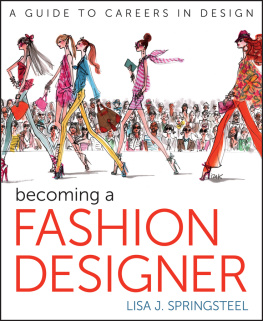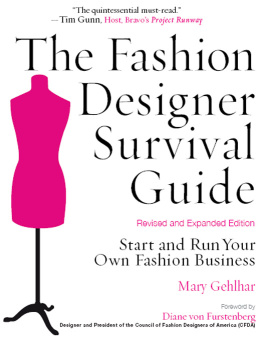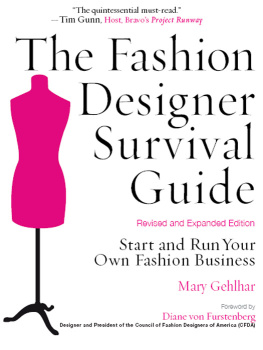B ECOMING A N EUROSURGEON
B ECOMING A V ETERINARIAN
B ECOMING A V ENTURE C APITALIST
B ECOMING A H AIRSTYLIST
B ECOMING A R EAL E STATE A GENT
B ECOMING A M ARINE B IOLOGIST
B ECOMING AN E THICAL H ACKER
B ECOMING A L IFE C OACH
ALSO AVAILABLE
B ECOMING A Y OGA I NSTRUCTOR
B ECOMING A R ESTAURATEUR
B ECOMING A P RIVATE I NVESTIGATOR
B ECOMING A B AKER
B ECOMING A S OMMELIER
B ECOMING A C URATOR
B ECOMING AN A RCHITECT

Simon & Schuster
1230 Avenue of the Americas
New York, NY 10020
www.SimonandSchuster.com
Copyright 2019 by Simon & Schuster, Inc.
Interior Illustrations 2019 by Donna Mehalko
All rights reserved, including the right to reproduce this book or portions thereof in any form whatsoever. For information, address Simon & Schuster Subsidiary Rights Department, 1230 Avenue of the Americas, New York, NY 10020.
First Simon & Schuster hardcover edition September 2019
SIMON & SCHUSTER and colophon are registered trademarks of Simon & Schuster, Inc.
For information about special discounts for bulk purchases, please contact Simon & Schuster Special Sales at 1-866-506-1949 or .
The Simon & Schuster Speakers Bureau can bring authors to your live event. For more information or to book an event, contact the Simon & Schuster Speakers Bureau at 1-866-248-3049 or visit our website at www.simonspeakers.com.
Library of Congress Cataloging-in-Publication Data has been applied for.
Jacket design by Alison Forner
Jacket images by Anar Babyev and Julia Maidaniuk/Istock/Getty Images
ISBN 978-1-9821-2113-6
ISBN 978-1-9821-2114-3 (ebook)
CONTENTS
INTRODUCTION
S ay something . Ive found myself repeating those two words over and over again throughout my life in fashion. Ive said them while waiting for emerging designers first shows to start. Ive said them clicking through look books that all look like Celine or Gucci knockoffs. Ive said them watching the most expensive and elaborate shows with the most boring clothes. There is a lot of noise and glamour in the fashion industry. There is also a healthy amount of nepotism, politics, whos who, and who you know. While those things endure, the one thing that remains is a need for someone to say something. What really matters is for a designer to communicate something so authentic and real that it breaks through in a visceral way.
Creating clothing that transcends time or preconceived notionsthats what being a fashion designer is about. Theres a lot that goes into saying something. It starts with where you come from creatively, how you developed your vision, and what you want people to feel when they see your brand. The designers who break through inject clothing with meaning. They speak even to those who dont particularly care, all the while reflecting and creating the zeitgeist.
If you do a quick Google search or walk into a bookstore, youll find very few books on how to be a fashion designerand for good reason. Theres no universal template. No one can give you the pencil and paper to start, no one can interpret your perspective, and there is no get-rich-quick guide. You can go to Central Saint Martins or Parsons School of Design, train under the right people, know the right editors, have endless funding, make interesting collections, and still falter. Even if you do everything right, there is still no guarantee, and what it means to be a fashion designer now is starkly different than what it meant twenty years ago, or even five years go. The groundbreaking designer Virgil Abloh, who founded his own haute streetwear brand Off-White and works as the mens artistic director of Louis Vuitton, admitted, Id sort of agree Im not a designer; this term seems like its for traditionalists, he says. TBD the new title.
People think of the fashion industry as this frivolous, carefree environment where everyone is twirling around in sequins, drinking champagne. On the surface sometimes that assumption can be right, but those who have made a real impact on the industry know all too well that it takes an unprecedented level of focus to have longevity and be more than a blip of hype on Instagram. They know the work, have done the work, and continue to do the work. Those who are resilient and have persevered, like Christopher John Rogers of his self-named label, Becca McCharen-Tran of Chromat, and Rosie Assoulin of her eponymous brand, can tell you all thats left is an innate desire to offer something thats unfiltered, consuming, and dynamic.
I am currently the youngest and only Black editor in chief in the United States at a major publication. My perspective about what it means to be a designer is different from people who have been in the fashion industry for forty years. Though there may never be another Karl Lagerfeld or Ralph Lauren, the industry has opened itself up to so much fresh talent. It is an exciting time to be a designer. New designers constantly bring something fresh to the table that weve never seen before. Ive seen the good and the bad, the original and the unoriginal, and enough to know the difference. Working my way up the ranks, first as fashion market editor at Style.com, then at New York magazines fashion blog The Cut , and now as editor in chief of Teen Vogue , has shaped my worldview of what it means to influence the design world no matter what is currently trendy or cool.
I talk to a lot of young designers in the early stages of their careers. People come up to me on the street or after Ive spoken on a panel and ask how to be seen in this industry. With this book I hope to give guidance and advice to any person invested in making fashion design their lifes work.
First of all, there is no easy way in, and theres no easy way to stay in. Every part of my career has been me clawing up a hill, hoping that my creativity, originality, and pure grit to outwork others will prove to be useful. If youre wondering whether youre in the right field, what it entails to be a designer, or how much money you would need to start your own collection, use this unfiltered book as a starting point to think about your future. When I began working in fashion I felt bitter because I read every magazine from cover to cover, but those publications never explained how long I would need to intern, that I would make nine dollars an hour as an assistant, and that I was expected to wear head-to-toe designer clothing every single day. The realities of working in the industry continue to shock me, whether its the hours, the politics, or the economics. I made it work in my early days: I changed mannequins at the DKNY store during weeknights, on the weekends waited tables at a restaurant, and took any freelance gigs I could with stylists in my spare time. I decided to write this book because I wish something similar had been available when I started. It would have been immensely helpful to know what I was getting into before I left the Midwest for New York to embark on this path.
To show you how its really done, what becoming a fashion designer really entails today, I followed three distinct designers. Each one has found their own way to stand out despite the noise, and established themselves as undeniable presences in the rapidly changing landscape of fashion. Learning from their experiences, this book tells the broader story of a career as a fashion designer.
I chose to talk with Christopher John, Becca, and Rosie because they have been influential in my career in fashion and because they are so open about their own pressures, successes, failures, and everything in between. I love their workand I firmly believe theyve made a permanent mark not only on the insular space of fashion but also on the world.









![Wagner James Au [Wagner James Au] - Game Design Secrets](/uploads/posts/book/119431/thumbs/wagner-james-au-wagner-james-au-game-design.jpg)




